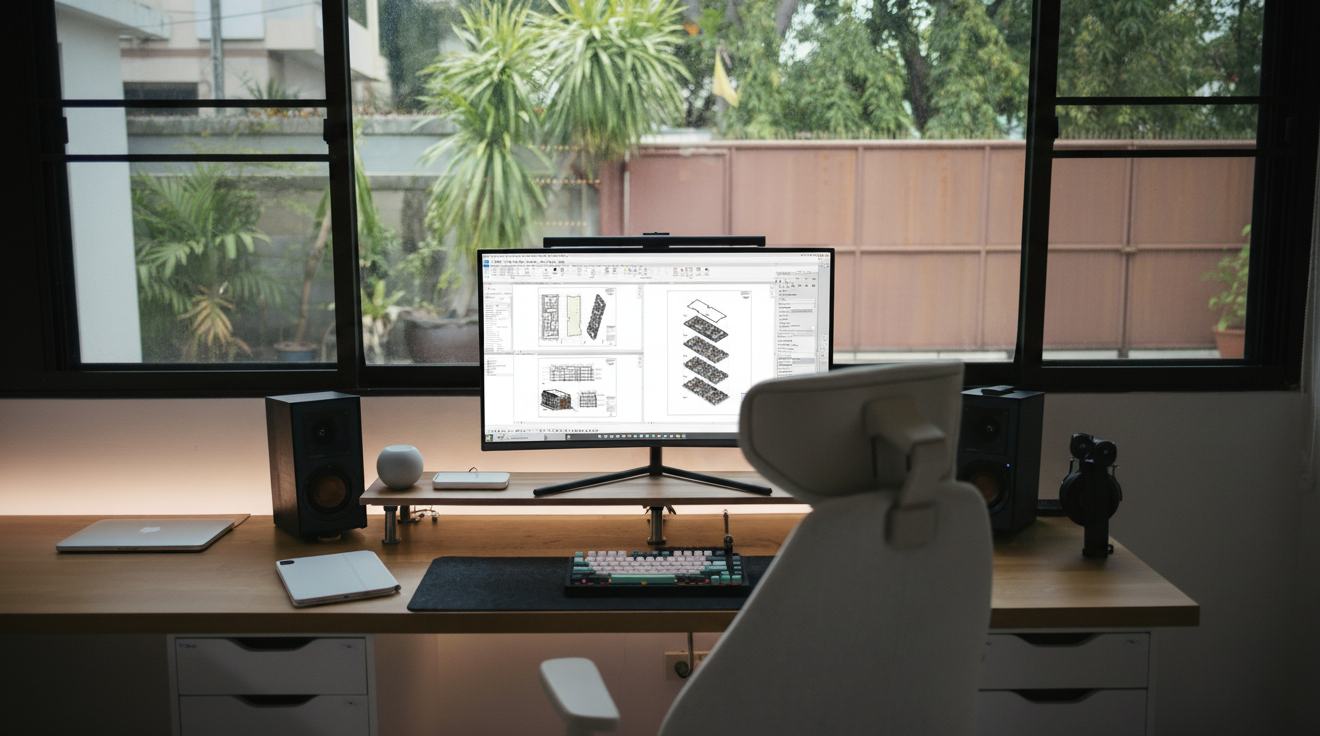How one complete BIM project can showcase your ability and readiness for professional practice.
Most architecture graduates leave university with creative ideas and attractive visuals. Yet when they walk into an interview, they quickly realise the rules have changed.
Firms still care about design quality, but they now judge candidates by how well they understand information, coordination, and delivery. When a recruiter asks, “Can you show me a full drawing set?” they are not just being polite. They are testing whether you can think and work in a BIM environment.
A single, complete Revit project communicates that better than any slideshow of renders ever could.
Why Firms Now Expect BIM Skills
Across the UK and Ireland, Building Information Modelling is no longer optional. Public projects already require ISO 19650 compliance, and private practices are rapidly following.
That shift has changed how new hires are assessed. Instead of focusing solely on design intent, studios now value workflow competence. This means being able to structure models logically, apply consistent naming, and issue documentation that aligns with professional standards.
Many firms even open Revit files during interviews. They look for well structured browsers, consistent line weights, and logical naming. Those details signal professional discipline and project readiness.
Why One Project Is Worth More Than Five Concepts
You do not need a huge portfolio. You need a complete one.
One finished BIM project shows that you understand every stage, from concept and modelling through to sheet issue and coordination. You learn how design decisions translate into data, how schedules work, and how drawings connect back to the model.
That level of understanding gives employers confidence that you can contribute on live projects, not just imagine them.
A single, polished Revit project demonstrates:
- The ability to manage your own workflow.
- Understanding of how to prepare and issue deliverables.
- Familiarity with the same standards used in professional practice.
What It Communicates to Employers
When a recruiter sees a complete drawing set, they do not just see neat sheets. They see evidence of process.
It shows that you can:
- Manage complexity and maintain organisation.
- Translate design into coordinated output.
- Work within structured BIM workflows and ISO 19650 naming conventions.
In short, a strong Revit project tells them you already think like a professional, not just a student.
How to Build a Portfolio That Works
You do not need to model an entire masterplan. A simple, well finished residential or small mixed use project is enough. Focus on demonstrating clarity, coordination, and completeness.
Show a few key elements:
- Plans, sections, and elevations with consistent line weight and annotation.
- A live schedule that proves data awareness.
- A 3D view that connects the visual and the technical.
Your goal is not volume; it is precision.
The Takeaway
The best portfolios are not the largest. They are the most complete. A single Revit project that is well organised, clearly documented, and ready to issue tells employers everything they need to know about your capability.
It shows that you can move beyond design ideas and deliver coordinated information in a professional environment.
At Arch-Aid, we help architecture graduates and teams move beyond software tutorials and build real, coordinated Revit projects. Our focus is on workflow, clarity, and producing deliverables that stand up in professional practice.

